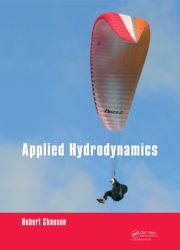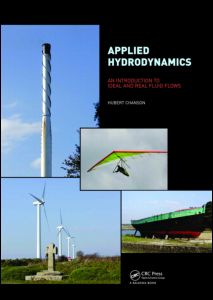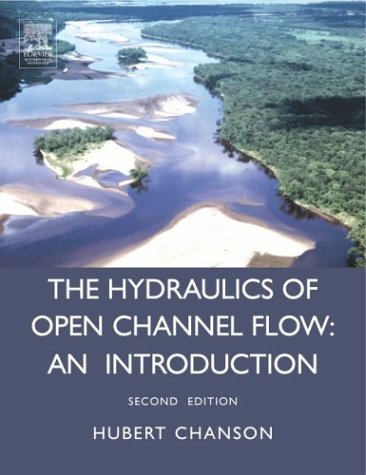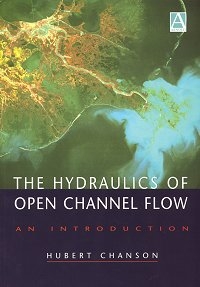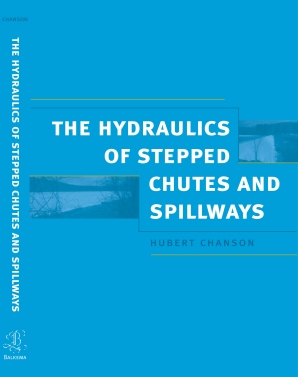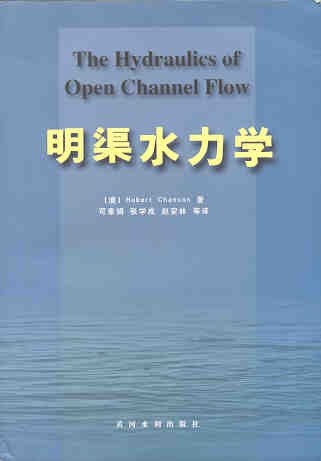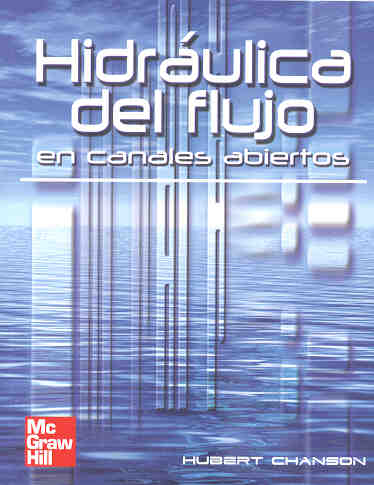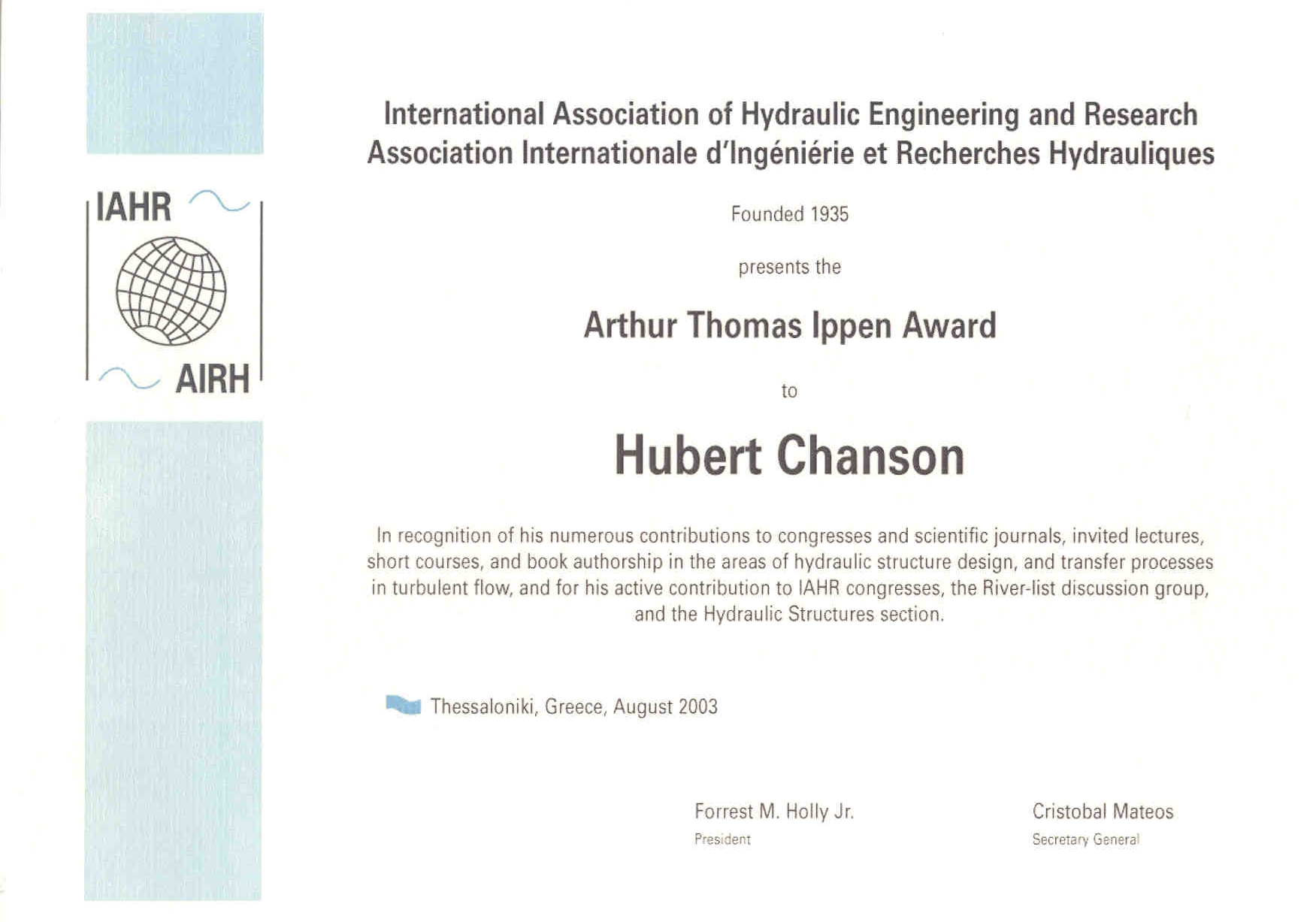WHIRLPOOLS
Experiencing Naruto whirlpools
by Hubert CHANSON (h.chanson@uq.edu.au)
M.E., ENSHM Grenoble, INSTN, PhD (Cant.), DEng (Qld),
Eur.Ing., MIEAust., MIAHR, 13th Arthur
Ippen awardee (IAHR)
Professor in Civil Engineering, The University of
Queensland, Brisbane
QLD 4072, Australia
 Presentation
Presentation
The Merriam-Webster's Collegiate Dictionary states that a whirlpool is
"water moving rapidly in a circle so as to produce a depression in the
centre
into which floating objects may be drawn". Basically a whirlpool is a
vortex
of vertical axis, with a downward velocity component near its centre. A
good example is the bathtub vortex. VAN DYKE ([1],
p. 59) presented a superb illustration. A related example is the vortex
dropshaft design.
In coastal zones, whirlpools are produced by the interaction of
rising and falling tides. They are often observed at the edges of
straits with large
tidal currents. (At Naruto, currents of up to 9 knots were observed.)
The
vortex (whirlpool) is a coherent structure typical of turbulent shear
flows where
there
is a velocity difference across the shear layer. It affect the
surrounding flow and water can be seen going back and forth across the
shear layer between vortices.
Notable oceanic whirlpools include those of Garofalo along the coast
of Calabria in southern Italy, and of Messina in the strait between
Sicily
and peninsular Italy, the Maelstrøm (from Dutch for "whirling
stream") located near the Lofoten Islands off the coast of Norway (Table
1). Whirlpools near the Hebrides and Orkney
islands, and in the Naruto strait between Awaji and Shikoku islands,
are also well known.
Whirlpools in the world
Whirlpools are sometimes called Maelstrom, after the Norwegian current.
The Maelstrøm is a strong tidal current of the Norwegian Sea in
the Lofoten islands [2]. Flowing between the
islands of Moskenesøya (North) and Mosken (South), it has a
treacherous current. Strong local winds make the passage additionally
dangerous. The word maelstrom entered the English language via fiction
novelists who exaggerated the current of the channel into a great
whirlpool (1). In English, the word "maelstrom"
designates a large, fatal whirlpool, engulfing vessels and men, or a
figurative application of the idea.
In Western Scotland, the Corryvreckan whirlpools are said to be "one
of the most notorious stretches of water anywhere around the British
Isles" (2). The whirlpools are caused
by a sudden rise of the seafloor in the strait.

Naruto whirlpools
The Naruto Strait (Naruto kaikyo) connects the Awaji and Shikoku
islands. The strait is 1.3 km wide. The tide is semi-diurnal and the
tidal range may be up to 1.7 m. The differences in tidal levels across
the strait may reach 1.5 m with current speds exceeding 9 knots (4.6
m/s) on the Northern part of the Strait [3].
The notorious "whirlpools" (uzu-maki) take place on the Southern
side of the Strait at the peak of the flow and ebb currents. The flow
and ebb are also called southward and
northward currents respectively.
Hubert CHANSON visited the Naruto
whirlpools on 17 October 2001 [4]
ad 15 December 2015. On Wednesday 17 October 2001, the meteorological
conditions
were poor because the centre of Typhoon No. 21 was located few hundreds
kilometres South of Japan. The ebb current was maximum around 12:20 pm (3). The waters flowed from the
Inland Sea (Setona Kai) to the Pacific Ocean. The whirlpools
were
best seen next to the Southern bridge pier (4).
He experienced the whirlpools between 10:45 am and 12:45pm, first from
the
Ohnaruto bridge walkway
(uzu-no-michi) (5) (6)
and later in a
boat. The bridge walkway is about 45 m above the sea level and reaches
450
m from the bridge abutment. From the bridge, the writer saw a freighter
which
became trapped in the whirlpools and vortices, and got stranded
(grounded)
beneath the bridge around 11:00 am. (The boat was still grounded 2
hours
later, waiting for the next high tide.)
Figure A shows whirlpools and
vortices on the Southern end of the Strait (right side when looking
into the flow direction). The main current flows on the left of the
vortices. The photograph was taken from 45 m above the sea, about 450 m
from the bridge abutment. Figure B
shows a street of vortices with a freighter in the background. Although
the turbulence appears less intense, the ship was subjected to a faster
current and to the effects of large-size cauldrons. Figure
C presents the same freighter
with a large size eddy (diameter larger than 50 m) downstream
of the whirlpools. Figure D (Naruto12.jpg) shows a single whirlpool,
view
from upstream and above. Figure E
&
Figure F are views from downstream.
In
Figure E and Figure
F, a whirlpool is visible in
the foreground of the photograph. A grounded freighter (green hull),
stranded next to the bridge pier, is visible in the background. In Figure
E, a white tourist boat is
coming around the Cape to view the whirlpools.
 Discussion
Discussion
Whirlpools are basically two-dimensional vortical structures occurring
in
a turbulent developing shear layer. Such a flow may be approximated by
a
series of vortices of identical rotational direction advected
downstream [6].
(In first approximation the advection velocity is equal to half the
main
stream velocity.) Each vortex is affected by the movement of the fluid
due
to the other vortices. Considering a pair of vortices, they will turn
around
each around while being advected downstream. (Far away the vortex pair
is
seen as an unique vortex of strength equal to twice the strength of one
vortex.)
In real turbulent flows, the vortices may collapse and form a new
larger
vortex of stronger strength and identical rotation direction (i.e.
vortex
pairing). Vortex pairing may be repeated downstream and could yield
very-large
scale eddy structures. The process is sometimes called an inverted
cascade
of vortices (7). It may be repeated further
downstream
and this yields large vortical structures (e.g. Photo
No. 2).
Footnotes
(1) For example, Jules VERNE
(1828-1905) in "Vingt mille lieues sous les mers" first published in
1869-1870 in the magazine "Magasin d'Éducation et de
Récréation" :
"«Maelstrom!
Maelstrom!»
s'écriait-il!
Le Maelstrom!
Un nom plus effrayant dans une situation plus effrayante pouvait-il
retentir à notre oreille? Nous trouvions-nous donc sur ce
dangeureux parages de la côte norvégienne? Le Nautilus
était-il entraîné dans ce gouffre, au moment
où notre canot allait se détacher de ses flancs?
On sait qu'au
moment du flux, les eaux resserées entre les îles
Feroé
et Loffoten sont précipitées avec une irréristible
violence. Elles forment un tourbillon dont aucun navire n'a jamais pu
sortir.
De tous les points de l'horizon accourent les lames monstrueuses. Elle
forme
ce gouffre justement appelé le «Nombril de
l'Océan»,
dont la puissance d'attraction s'étend jusqu'à une
distance
de quinze kilomètres. Là sont aspirés non
seulement
les navires, mais les baleines, mais aussi les ours blancs des
régions
boréales.
C'est
là que le Nautilus - involontairement ou volontairement
peut-être -, avit été engagé par son
capitaine. Il décrivait une spirale dont le rayon diminuait de
plus en plus. ..."
(2) A full article on the
Corryvreckan whirlpools is at {http://www.smithsonianmag.si.edu/journeys/01/aug01/feature_full_page_1.html}.
(3) The high tide was at ...
am [... m] and the low tide was at ... pm [... m].
(4) Prior to construction,
the bridge design was extensively studied to prevent any impact on the
currents, fauna and whirlpools.
(5) The Ohnaruto bridge was designed to carry both cars and trains on
the upper and lower decks respectively. The train link was never
completed and the newer Akashi bridge does not carry trains. The
bridge's lower deck carries today water between Awaji and Shikoku
islands, and the tourist walkway.
(6) The Japanese website of uzu-no-michi is HERE.
Viewing times are listed HERE
and HERE.
(The best times are highlighted in RED.
The first column lists the flow or flood conditions (marée
montante) and the second the ebb (jusant).)
(7) In Nature, turbulent vortices are usually developed with a
relatively
large initial size (macroscale), but they break down into smaller and
smaller
eddies in the process of turbulent mixing. In the smallest eddies
(microscale),
viscous resistance dissipates virtually all the kinetic energy that
initially
existed in the larger eddies. This process of vortex generation and
dissipation
is a key feature of turbulent flows. It is sometimes called a cascade
of
vortices from macro- to micro-scales.
Table 1 - Characteristics
of
large whirlpools
|
Strait :
|
Naruto
|
Maelstrom
|
Saltstraumen & Sandstraumen
|
Corryvreckan
|
|
Other name(s) :
|
Naruto kaikyo
|
Moskstraumen
|
Saltfjord & Skjerstadfjord
|
Corrievrekin, Charybdis
|
|
Country :
|
Japan
|
Norway
|
Norway
|
Scotland
|
|
Location :
|
between Awaji and Shikoku islands
|
between Lofoten Pointand Vaerøy island, Lofoten
islands
|
50 km North of Bodø
|
between Scarba and Jura islands, Western Scotland
|
|
Tidal range :
|
up to 1.7 m
|
|
up to 3 m (?)
|
|
|
Strait width :
|
1.3 km
|
8 km
|
? (Sandstraumen)
? (Saltstraumen)
|
|
|
Current speed :
|
up to over 9 knots (4.6 m/s)
|
up to 7 knots (3.6 m/s)
|
|
up to 9 knots (4.6 m/s)
|
|
Whirlpools :
|
Large whirlpools on the Southern end during ebb
|
|
|
|
|
Access :
|
Views from Ohnaruto bridge and from tourist boats
|
|
Two straits : Sandstraumen & Saltstraumen
Views from the bridge crossing
|
|
Detailed
photographs
Photo No. 1 : general view from Ohnaruto
bridge.
Photo No. 2 : whirlpools and
vortices with a freighter in background, note the large eddy (over 50-m
diameter) on the right.
Photo No. 3 : tourist boat in the
middle of the whirlpools.
Photo No. 4 : street of vortex.
Photo No. 5 : Freighter and
whirlpools.
Photo No. 6 : whirlpool in
foregound right with stranded freighter in background.
Photo No. 7 : freighter trapped in
Naruto whirlpools which became grounded beneath the bridge.
Photo No. 8 : grounded bow of the
freighter.
Photo No. 9 : grounded freighter on
17 Oct. 2001.
Photo No. 10 :
Flood flow on 9 July 2002 beneath the bridge (Courtesy of Drs ICHIMIYA
and
BROWN).
Photo No. 11: Turbulent vortices
during the flood flow on 9 July 2002 (Courtesy of Drs ICHIMIYA and
BROWN).
Related
links
References
[1] VAN DYKE, M. (1982). "An Album of Fluid Motion." Parabolic Press,
Stanford CA, USA, 176 pages.
[2] GJEVIK, G., MOE, H., and OMMUNDSEN, A. (1997). "Sources of the
Maelstrom." Nature, Vol. 388, 28 Aug 1997, pp 837-838.
[3] NISHIMURA, T. (1986). ""The Tidal Whirlpools Encountered in the
Naruto-Strait." K. Sanbunsha Publ., Tokyo, Japan, 145 pages.
[4] CHANSON, H. (2002). "Whirlpools. Experiencing Naruto Whirlpools." IAHR
Newsletter, Vol. 40, No. 2, pp. 17 & 28-29. (PDF
file
at UQeSpace) (Download PDF
file)
[5] CHANSON, H. (1999). "The Hydraulics
of Open Channel Flows : An Introduction." Butterworth-Heinemann,
London, UK,
512 pages (ISBN 0 340 74067 1).
[6] CHANSON, H. (2014). "Applied Hydrodynamics: An Introduction." CRC Press,
Taylor & Francis Group, Leiden, The Netherlands, 448 pages & 21
video movies (ISBN 978-1-138-00093-3).
Acknowledgments
The writer acknowledges the help and support of Bernard CHANSON, Nicole
CHANSON, Andre CHANSON, Ms
Ya-Hui CHOU and Prof. Shin-ichi AOKI. He further acknowledges the assistance
of
Mr
J. CHANSON, Dr T. NISHIMURA, Dr ICHIMIYA and Professor Richard BROWN
License

This work is licensed under a Creative
Commons
Attribution-NonCommercial 3.0 Unported License.
Hubert
CHANSON
is aProfessor in Civil Engineering, Hydraulic Engineering and
Environmental Fluid Mechanics at the University
of Queensland, Australia. His research interests include design of
hydraulic structures, experimental investigations of two-phase flows,
applied hydrodynamics, hydraulic engineering, water quality modelling,
environmental fluid mechanics, estuarine processes and natural resources.
He has been an active consultant for both governmental agencies and
private organisations. His publication record includes over 1200
international refereed papers and his work was cited over 10,000 times
(WoS) to 26,000 times (Google
Scholar) since 1990. His h-index is 47 (WoS), 51 (Scopus) and 79 (Google
Scholar), and he is ranked among the 150 most cited researchers in
civil engineering in Shanghai’s
Global Ranking of Academics. Hubert Chanson is the author of twenty
books, including "Hydraulic Design
of Stepped Cascades, Channels, Weirs and Spillways" (Pergamon,
1995), "Air Bubble Entrainment in
Free-Surface Turbulent Shear Flows" (Academic
Press, 1997), "The Hydraulics
of Open Channel Flow: An Introduction" (Butterworth-Heinemann,
1st edition 1999, 2nd
editon 2004), "The Hydraulics of
Stepped Chutes and Spillways" (Balkema,
2001), "Environmental
Hydraulics of Open Channel Flows" (Butterworth-Heinemann,
2004), "Tidal
Bores, Aegir, Eagre, Mascaret, Pororoca: Theory And Observations" (World
Scientific, 2011), "Applied
Hydrodynamics:
an Introduction" (CRC
Press, 2014). He co-authored three further books "Fluid Mechanics
for Ecologists" (IPC Press, 2002), "Fluid Mechanics for Ecologists.
Student Edition" (IPC, 2006) and
"Fish Swimming in Turbulent Waters. Hydraulics Guidelines
to assist Upstream Fish Passage in Box Culverts" (CRC Press 2021). His textbook "The Hydraulics
of Open Channel Flows: An Introduction" has already been translated
into Spanish (McGraw-Hill
Interamericana) and Chinese (Hydrology Bureau of Yellow
River Conservancy Committee), and the second
edition was published in 2004. In 2003, the IAHR
presented him with the 13th Arthur Ippen Award
for outstanding achievements in hydraulic engineering. The American
Society of Civil Engineers, Environmental and Water Resources Institute
(ASCE-EWRI) presented him with the 2004 award for the Best Practice paper
in the Journal of Irrigation and Drainage Engineering ("Energy
Dissipation
and Air Entrainment in Stepped Storm Waterway" by Chanson and
Toombes 2002), the 2018 Honorable Mention Paper Award for "Minimum Specific
Energy and Transcritical Flow in Unsteady Open-Channel Flow" by
Castro-Orgaz and Chanson (2016) in the ASCE Journal of Irrigation and
Drainage Engineering, the 2020 Outstanding Reviewer Award, and the 2021
Outstanding Reviewer Award. The Institution of Civil Engineers (UK)
presented him the 2018 Baker Medal. In 2018, he was inducted a Fellow of
the Australasian Fluid
Mechanics Society. Hubert Chanson edited further several books : "Fluvial, Environmental and Coastal
Developments in Hydraulic Engineering" (Mossa, Yasuda & Chanson
2004, Balkema), "Hydraulics.
The
Next Wave" (Chanson & Macintosh 2004, Engineers
Australia), "Hydraulic
Structures:
a Challenge to Engineers and Researchers" (Matos & Chanson 2006,
The University of Queensland), "Experiences and
Challenges in Sewers: Measurements and Hydrodynamics" (Larrate &
Chanson 2008, The University of
Queensland), "Hydraulic
Structures:
Useful Water Harvesting Systems or Relics?" (Janssen & Chanson
2010, The University of Queensland),
"Balance
and Uncertainty: Water in a Changing World" (Valentine et al. 2011,
Engineers Australia), "Hydraulic
Structures and Society – Engineering Challenges and Extremes"
(Chanson and Toombes 2014, University
of Queensland), "Energy
Dissipation
in Hydraulic Structures" (Chanson 2015, IAHR
Monograph, CRC Press). He chaired the Organisation of the 34th
IAHR World Congress held in Brisbane, Australia between 26 June and
1 July 2011. He chaired the Scientific Committee of the 5th IAHR
International Symposium on Hydraulic Structures held in Brisbane in
June 2014. He co-chaired the Organisation of the 22nd Australasian Fluid
Mechanics Conference held as a hybrid format in Brisbane, Australia on
6-10 December 2020.
His Youtube channel is: {https://www.youtube.com/@Hubert_Chanson}.
His Internet home page is http://www.uq.edu.au/~e2hchans.
He also developed a gallery of photographs website {http://www.uq.edu.au/~e2hchans/photo.html}
that received more than 2,000 hits per month since inception.
More pictures of whirlpools are here
...
Hubert CHANSON's TECHNICAL INTERNET RESOURCES
More about a history of arch dams
... More about timber crib
weirs ... More about steel
dams
...
More about engineering
failures ... More about rubber
dams ... More about a tidal
bore ...
More about the Formal Water Garden
.... More about rapid
reservoir sedimentation in Australia ...
More about Minimum Energy Loss culverts
.. More about Minimum Energy
Loss weirs ...
This page was visited 19,454 times between
26-10-2001 and June 2012.
Last updated on 24/9/2023
 Presentation
Presentation 




